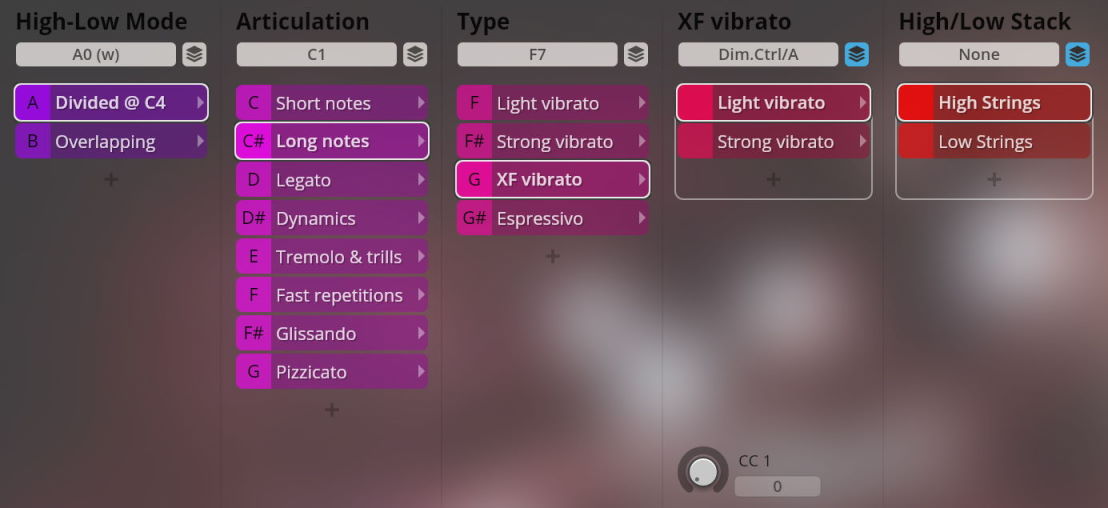Big Bang Orchestra: Musca

Introduction
Welcome to the Vienna Symphonic Library's series of Synchron Instruments! As the name says, Big Bang Orchestra furnishes you with a selection of full-orchestra articulations, at the same time allowing you (if you haven't done so already) to explore our powerful Synchron Player software. If you're looking for that extra dramatic effect or want to highlight a passage in your composition, this bonus library could be the solution, or at least point you in the right direction.
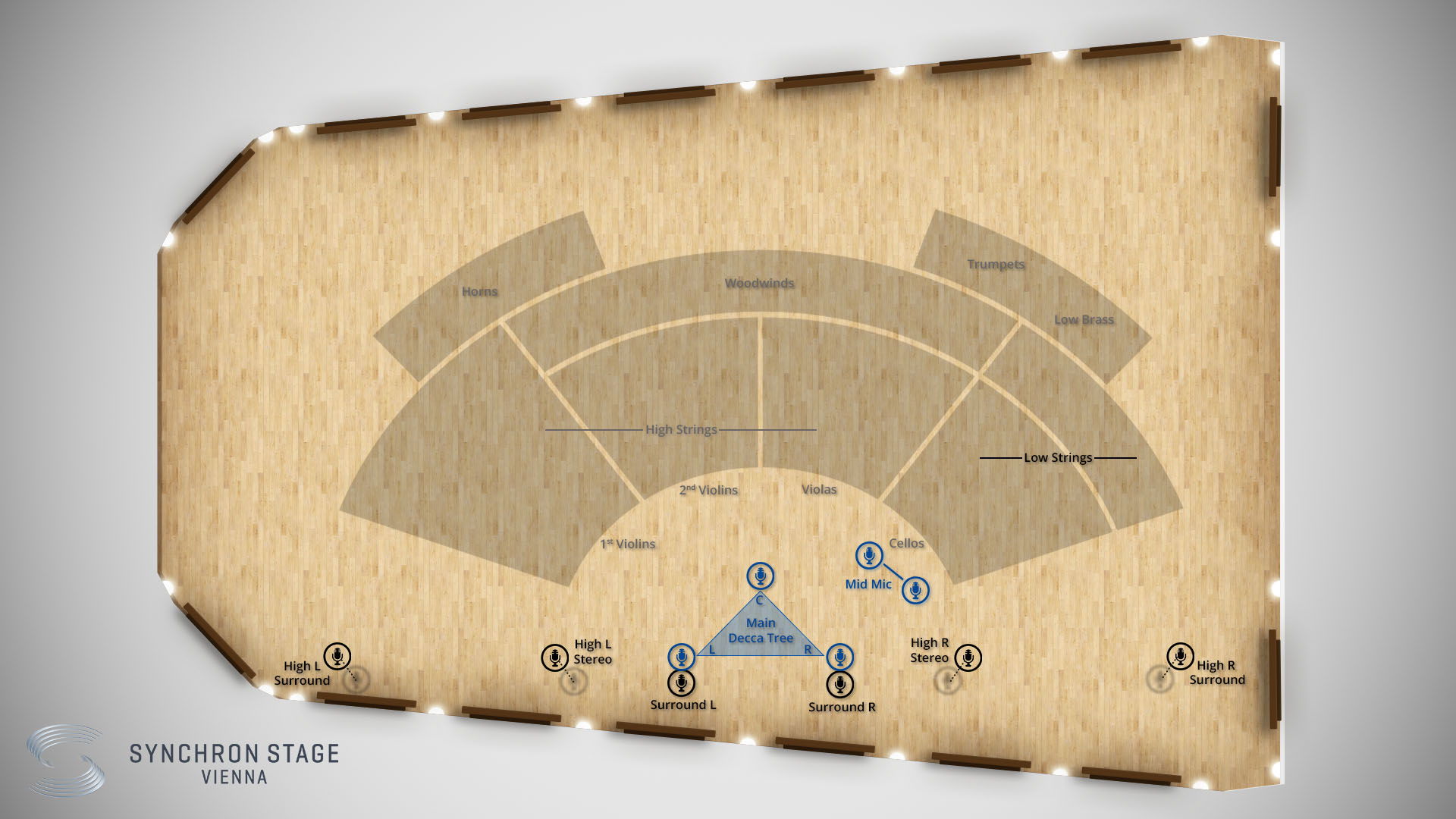
About Presets
Big Bang Orchestra makes use of our Synchron Player's unique features, and offers several Mixer Presets in five categories: Room Mix, Stereo Decca Tree, Surround to Stereo, Surround, and Processed. The Mixer Presets in each category are Close (Dry in the Room Mix), Classic, Wide, Distant, and Ambient. The Processed section offers "Big" versions of these Presets.
The BBO expansions also provide you with "Wet" Mixer Presets in each category, as well as more choice in the Processed section. These additional Mixer Presets may vary according to the respective libraries' requirements.
About Patches
Patches can be used to build your own custom Presets and shape them according to your specific requirements. Big Bang Orchestra does not contain so many Patches, so the possibilities are somewhat limited. Still, if you want to get into creating Presets of your own, please refer to the Synchron Player manual, which will be helpful in case you encounter any problems.
About Pitch
For designating pitch, the Vienna Symphonic Library uses International Pitch Notation (IPN), which was agreed upon internationally under the auspices of the Acoustical Society of America. In this system the international standard of A=440 Hz is called A4 and middle C is C4. All pitches are written as capital letters, their respective octave being indicated by a number next to it. The lowest C on the piano is C1 (the A below that is A0), etc.
The Synchron Player software allows you to set middle C to C3, C4, or C5 according to your preference.
Selecting another setting than C4 will of course also change the play ranges and keyswitches accordingly.
Walkthrough Videos
Included Presets

BBO Lyra and BBO Musca feature high and low string ensembles, respectively. The layout of articulations is designed to resemble that of other BBO Libraries with similar content (e.g., Hercules with its low brass ensembles), so that you can switch between the articulations of different Libraries without having to adapt any keyswitches.
- Range: B1-F5
- Articulation Keyswitches: C6-G6
- Type Keyswitches: starting at C7

Short notes
Bold and agile.
- Bold/agile: C2/C#2
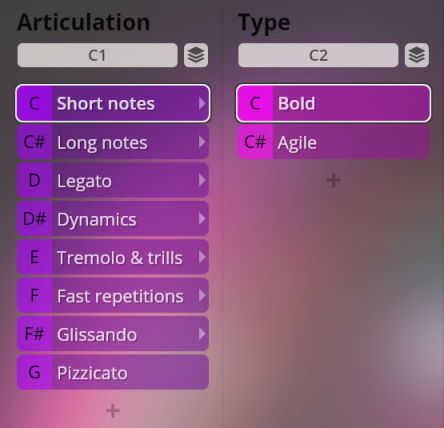
Long notes
Long notes with light and strong vibrato, and espressivo.
- Type keyswitches: C2-D#2
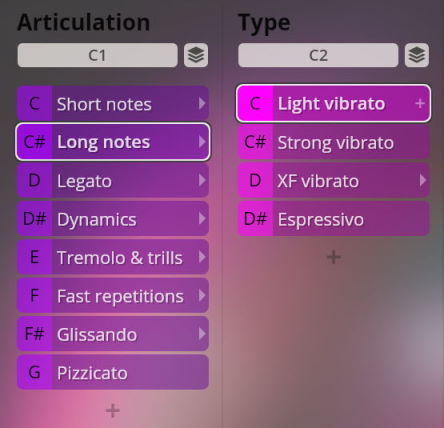
XF vibrato
The XF vibrato option combines the light and strong vibrato articulations, so that you can control the vibrato amount using Dim.Ctrl/A (MIDI CC1, modwheel).
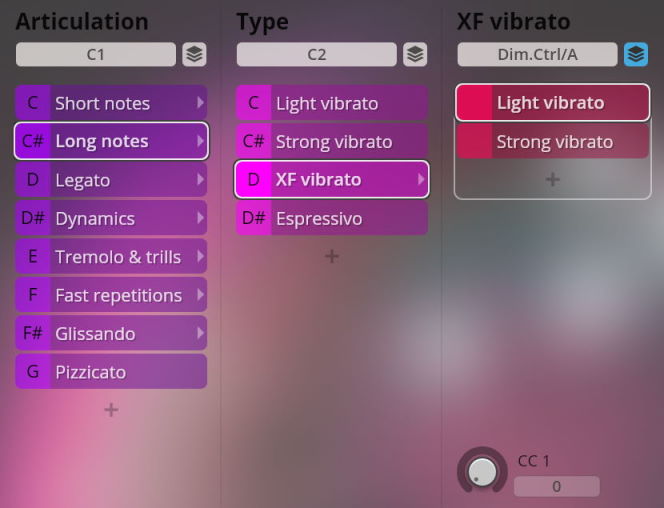
Legato
Legato with light and strong vibrato, and marcato. There also is an XF vibrato slot with Dim.Ctrl/A (MIDI CC1, modwheel).
- Type keyswitches: C2-D#2
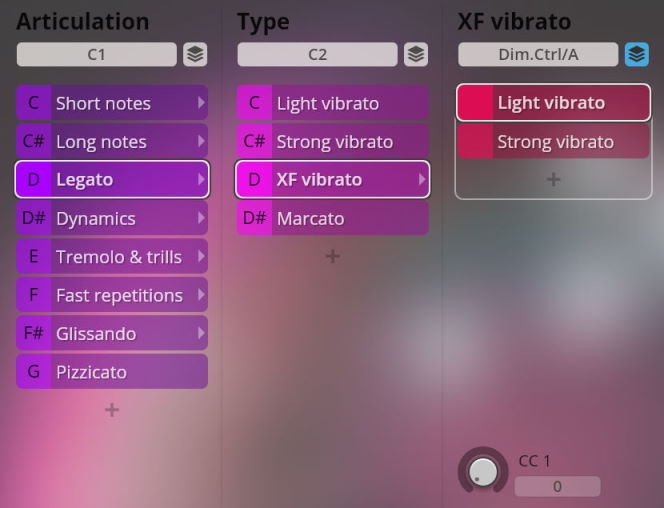
Dynamics
Sforzato, sforzatissimo, swells short and long, soft and very soft swells, and soft diminuendo.
- Type keyswitches: C2-F#2
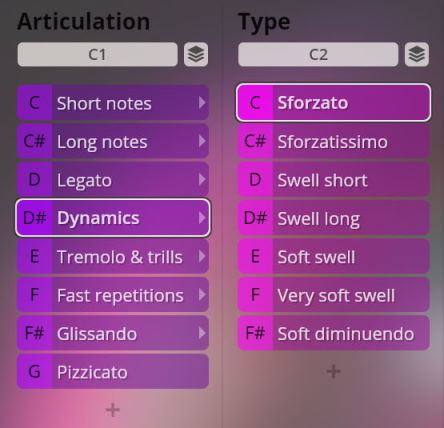
Tremolo & trills
Tremolo regular and with fast attack, half and whole tone trills.
- Type keyswitches: C2-D#2
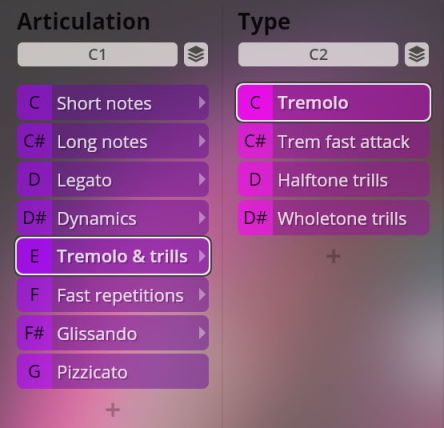
Fast repetitions
Staccato repetitions at 120, 140, and 160 BPM, with the choice of proper note release or cut release. These are already prepared for timestretching, i.e., all Patches have the original tempo they were recorded with entered as their source tempo. This allows you to adapt your repetitions automatically to the tempo of your project with only two mouse clicks.
- Tempo keyswitches: C2-D2
- Note/cut release: A5/B5
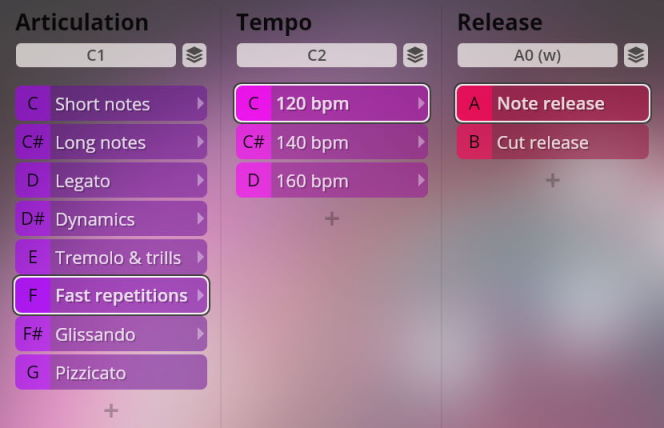
Glissando
Glissandos, minor and major second, up and down.
- Interval keyswitches: C2/C#2
- Up/down keyswitches: A5/B5
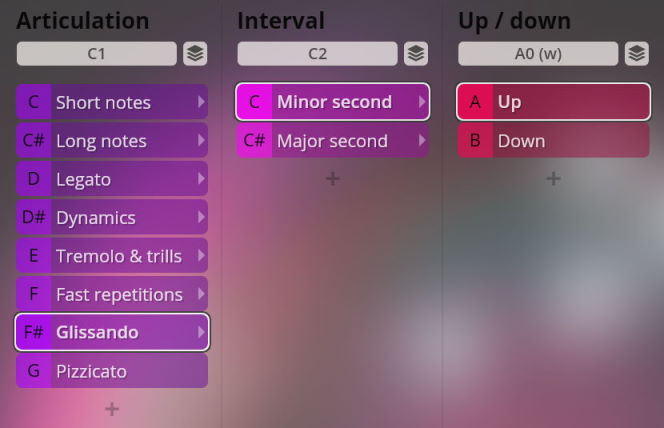
Pizzicato
Pizzicato, with no further options.
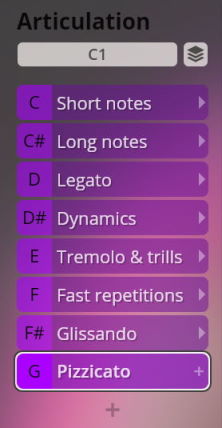
Lyra + Musca: High & Low Strings
Owners of both BBO Lyra and BBO Musca will find in the Musca Presets an additional combined Preset, where both Libraries are stacked to present the full tone range of high and low strings together. You can select two modes - one where the high and low notes are divided at C4, and one where they overlap. Below you can see an example of what the Preset looks like.
- Range: B1-D7
- High-Low Mode keyswitches: A0/B0
- Articulations: C1-G1
- Type keyswitches: starting at F7
- Glissando up/down: A7/B7
